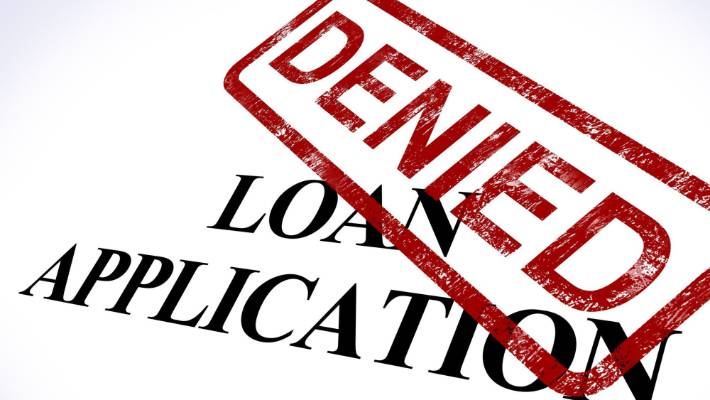When looking for a loan (a car loan, a mortgage loan, a personal loan), the first thing people think of is visiting their bank’s local branch. They usually offer excellent customer service, and you tend to get what you need from them. But what do you do if your bank says no to your loan request?
What other options do you have?
What do you do if your bank says no?
1. Invoice finance
Invoice finance is another area of renewed innovation; as well as new providers offering traditional products like factoring, and there are also technology-based firms that use slick online tools to make invoice finance easier to manage.
Others have taken the peer-to-peer model of matching individual investors with businesses looking to borrow and combined it with invoice finance, which means a pool of people ‘bid’ to buy your invoices, reducing the cost to your business.
Also Read: Working capital loans
2. Invoice Factoring
When sourcing for invoice factoring, a small or medium-sized company gives up its invoices to a third party to get some percentage of its value. The financier is then required to get the amount from the customer.
This method is of great benefit to the business that does not have enough staff to manage its debt and keep up with the growing needs of the business.
Although this method is time-saving, customers get exposed to third-party creditors and might make them lose interest in making a purchase from your business in the long run.
3. What to do if a bank says no: Logbook Loans
A logbook loan is another alternative asset financing option if a bank says no. This is because it is faster and does not require any other collateral apart from the car logbook.
A logbook loan is also manageable and comes with the benefit of possession and use of the car involved.
Disadvantages of a logbook loan are, however, restrictions on the use of the car to only activities that do not require the logbook and risk of loss of possession in case the agreed monthly payments are not honored.
4. What to do if a bank says no: Invoice Discounting
What to do if a bank says no? Use Invoice Discounting. Although it may appear the same as invoice factoring, it is a different invoice financing option.
While the credit-control is transferred to a third party in invoice factoring, here, the credit-control is not tampered with.
This is ideal for a business that requires confidentiality as the customer does not have to know that the business has taken an asset financing option.
Invoice discounting is where the financier gives a loan with the value of invoices at hand and gets monthly agreed payments until the loan is settled.
Business with inconsistent cash flow may find a challenge when implementing this method as may not be able to honor the monthly agreements.
Also Read: How Invoice Discounting Saved My Business
5. Business Credit Cards
What to do if a bank says no? Bring out your business credit cards.
Your business’s most significant expenses, like payroll and rent, will require loan-sized funds to satisfy.
But you can meet the many other expenses you face daily with a business credit card.
Plus, using a credit card responsibly (which, in large part, means paying your credit card bills in full and on time every month) will boost your credit score.
Other than cash flow, your creditworthiness is a crucial factor in the business loan application.
There are many business credit cards on the market today, and they all come with perks, rewards, and features that match the reason you’re looking for funds in the first place.
6. Equipment Financing
What to do if a bank says no? You can turn to equipment financing.
The underwriting process for an equipment loan is a little different than that of a traditional term loan.
The lender fronts you the cash to fund up to 100% of a piece of equipment, and they use the machine itself as collateral.
For that reason, lenders are just as concerned with the value of the equipment itself as they are with your business’s financial record.
In a way, an equipment loan is like a business loan with no collateral of your own required. The terms of an equipment loan are based on credit (both business and personal), time in the industry, and how well the equipment fits into your business plan. Cash flow isn’t a significant factor in that decision.
If you’re looking for a new machine, computer, or vehicle to boost revenue, it makes a lot of sense to look into an equipment loan.
Also Read: How to pick a factoring company
Top reasons why banks say no
- Timing: For commercial transactions to fund it takes 90+ days. Most residential now takes around 30 days.
- Income: Unless you are a salaried employee, banks are more cautious with self-employed borrowers and small business owners. As a self-employed borrower or small business owner, your taxes are not black and white; there are typically many deductions, and your income might be more erratic (for example you got a big sale done one month and then smaller transactions subsequent months). In essence, taxes likely don’t reflect the whole cash picture of your financial situation. Many banks struggle with this ambiguity.
- Credit: Many borrowers have credit that is less than perfect due to the last recession. Even though your financials look great now, your loan is a lagging indicator that likely doesn’t reflect the current state of your financial situation now.
- Most lenders use a debt to income ratio to see if you can handle the payments upon approval of your loan. They compare how much you earn each month to how much you spend on debt repayment, assuming minimum payments. If it doesn’t look like you’ll be able to afford the new debt, they reject your application.
- When applying for small business loans, lenders often look at the business owner’s credit. Unless business owners pledge personal assets as collateral or the business is well-established, the chances of getting approved are slim.
What to do if a bank says no to funding?
- Get organized: Make sure your presentation is flawless with all the info upfront like tax returns, leases, operating statements, prior appraisals, etc.
- Have a good plan/objective: What do you need the funds for? What is the “plan”. You need to clearly/concisely articulate what you are trying to accomplish and have numbers to back it up.
- Look for a lender that fits your needs: Most lenders have a specialty and are more comfortable with one type of business/property than others. This is also true on location. Identify the appropriate lender before submitting a package.
- Build your credit: Borrowing will be more comfortable in the future if you build a strong credit history. That means you’ll need to borrow and repay loans on time. Your credit will gradually improve, and you’ll get better interest rates and fewer rejections going forward.
- Pay down debt: Your existing loans affect your ability to get new credits. Paying off old debt will increase the amount of your monthly income that’s available for newer loans.




